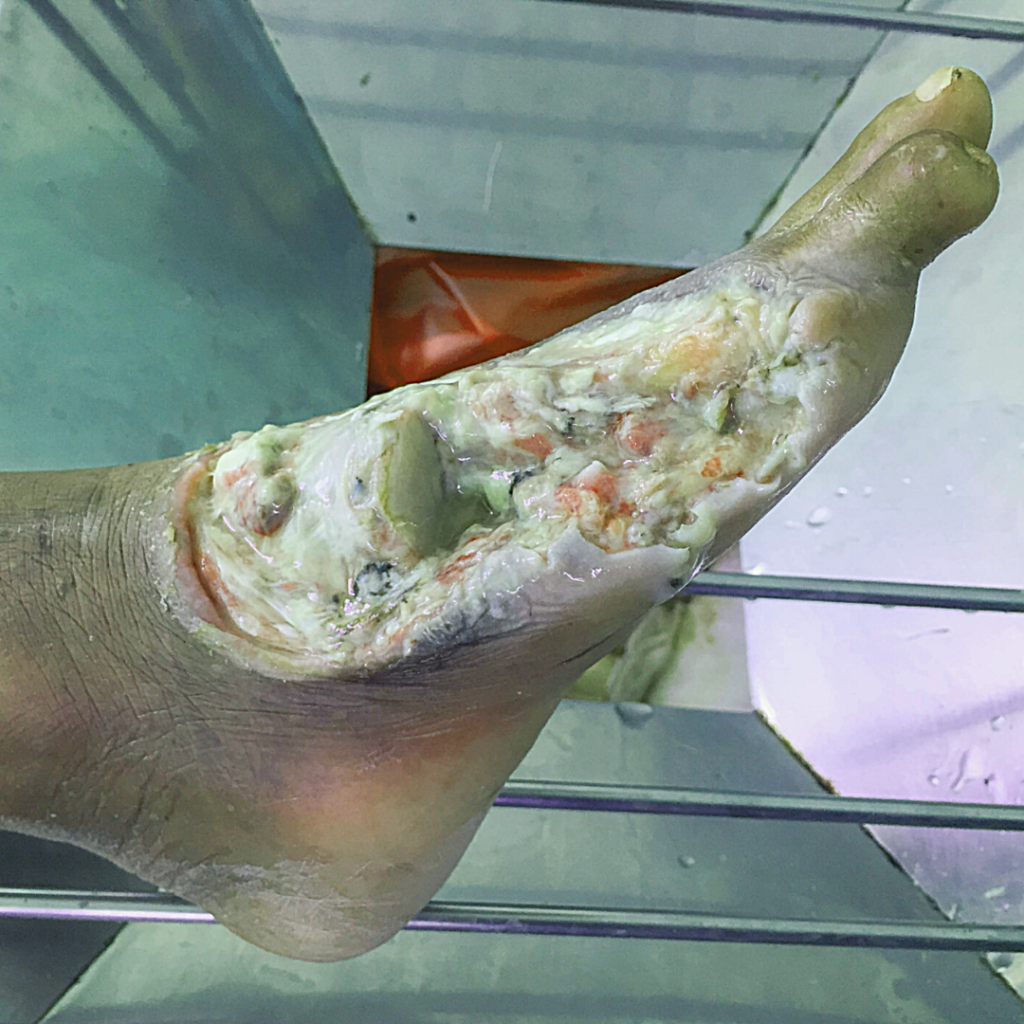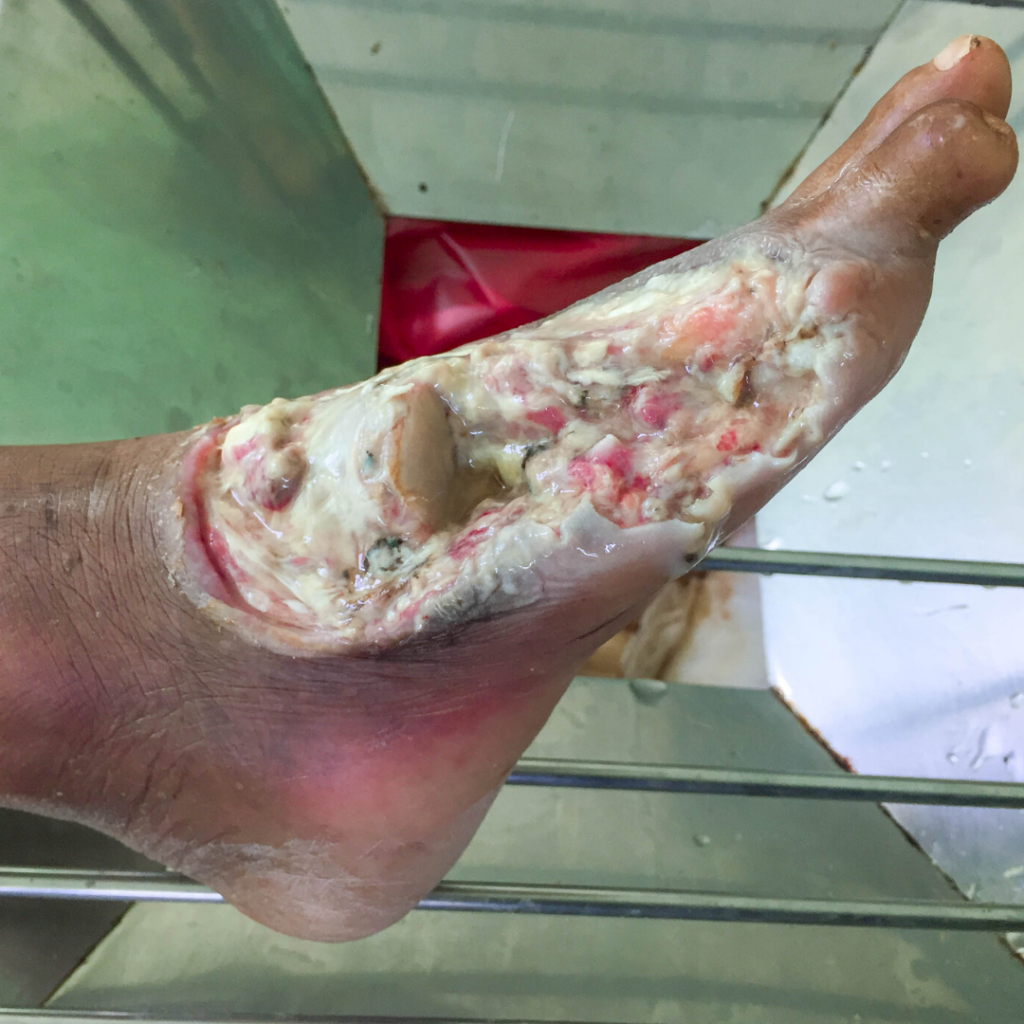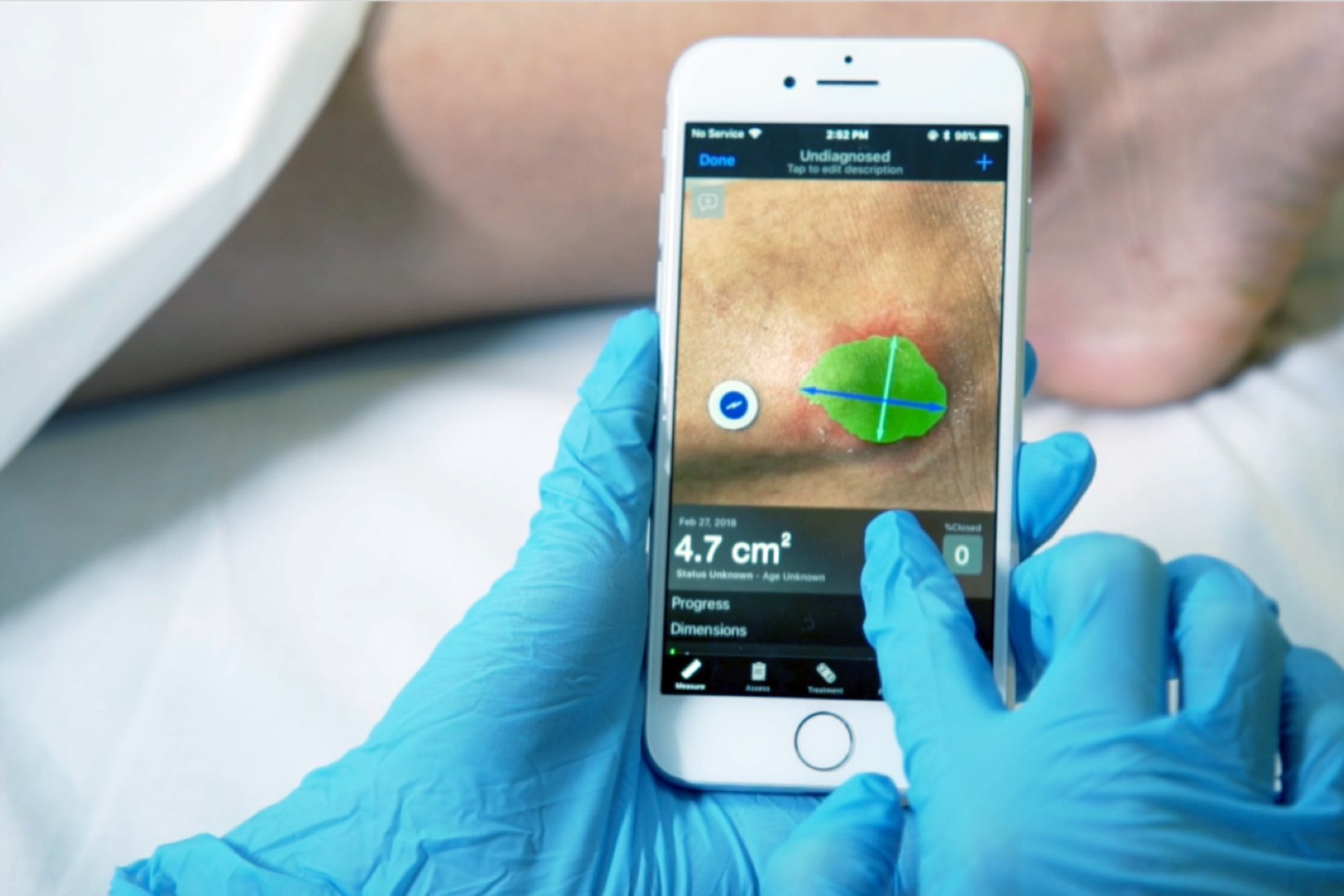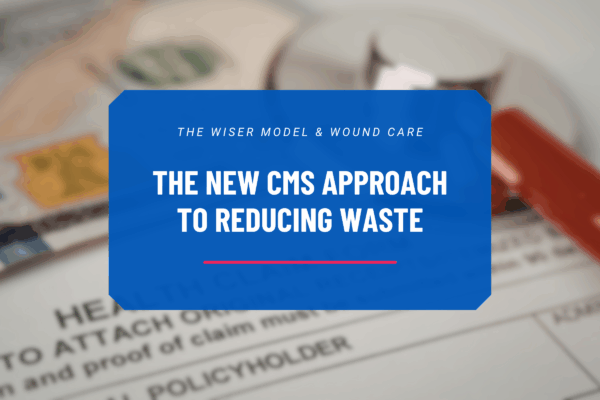“What’s that blue dot?”
We get asked this all the time. The small blue sticker you see in all of the Swift product imagery is called the ‘HealX’. It’s small but powerful, and a really critical part of how the whole Swift Skin and Wound platform works.
The Swift HealX
- FDA-registered scientific calibrant – or, simply put: a specialized single-use sticker.
- 1 cm in diameter.
- Packaged in rolls of 500 or envelopes of 54 (three sheets of 18).
- A different sticker is used for each wound that you measure, and is discarded after use.
- Helps you position your device for taking the optimal wound photograph.
- Calibrates or adjusts the image for accurate size, colour and lighting.
The HealX is a big part of what separates regular wound photography from wound images taken with Swift Skin and Wound.
How Does it Work?
The Swift HealX works by being placed next to the skin alteration, and helps:
- The clinician to line up and take the image from the best distance and position; and
- The Swift Skin and Wound Application to adjust for colour, lighting and size when taking the image.
The application can then perform the point-of-care aspect of its function: taking the best quality image possible, automatically calculating clinically-validated measurements and capturing colour trends.
All of these captured data points are then stored in the web-based administrative dashboards, accessible from anywhere. Now you can track healing progression over time and you have a very handy visual journey to go with it. Swift is mighty powerful, and it all starts with that little blue dot.
The Swift HealX is the only FDA-registered marker able to calibrate for scale, size and colour with a single marker.
Why is it Important?
As a clinician, you will be taking wound images at different times of day, in different lights and in different rooms. You need to be confident that if the wound isn’t changing, the photographs will reflect that, and vice versa. Perhaps the wound isn’t changing, but uncalibrated photographs might make it seem that it is. Knowing the true progress, or lack thereof, of your patients’ wounds is critical to treatment and healing. Using calibrated wound photography ensures that anytime you take a picture, the same colouration is always used.


The two images above are taken with different lighting. You can see how this changes the colour treatment and in turn would impact the perception of the reviewing clinician. You want to standardize how the images are taken, using tools that will calibrate and account for colour, lighting and size – every time.
Checklist for a Calibrant Sticker
- Where is it manufactured?
- Is it FDA-registered?
- Is it tested on skin?
- Is it easy for the clinician to use?
- What is the point-of-care experience?
- What is the impact for the patient?
This checklist is important to consider when thinking about a digital wound care platform. Here’s why:
- Some vendors don’t have a calibrant sticker: you won’t be getting the highest quality images standardized for setting. This could affect treatment decisions and healing progression.
- Some vendors make you purchase generic stickers from a stationary store: would you want an untested, unregistered sticker next to your wound?
- Some vendors have large sized stickers, or require multiple stickers to be placed: this complicates things at the point-of-care, since there are areas of the body where it would be difficult to place two/large stickers. The smaller the better.
Got questions about the HealX? Contact us to discuss how we can optimize wound care at your organization.





